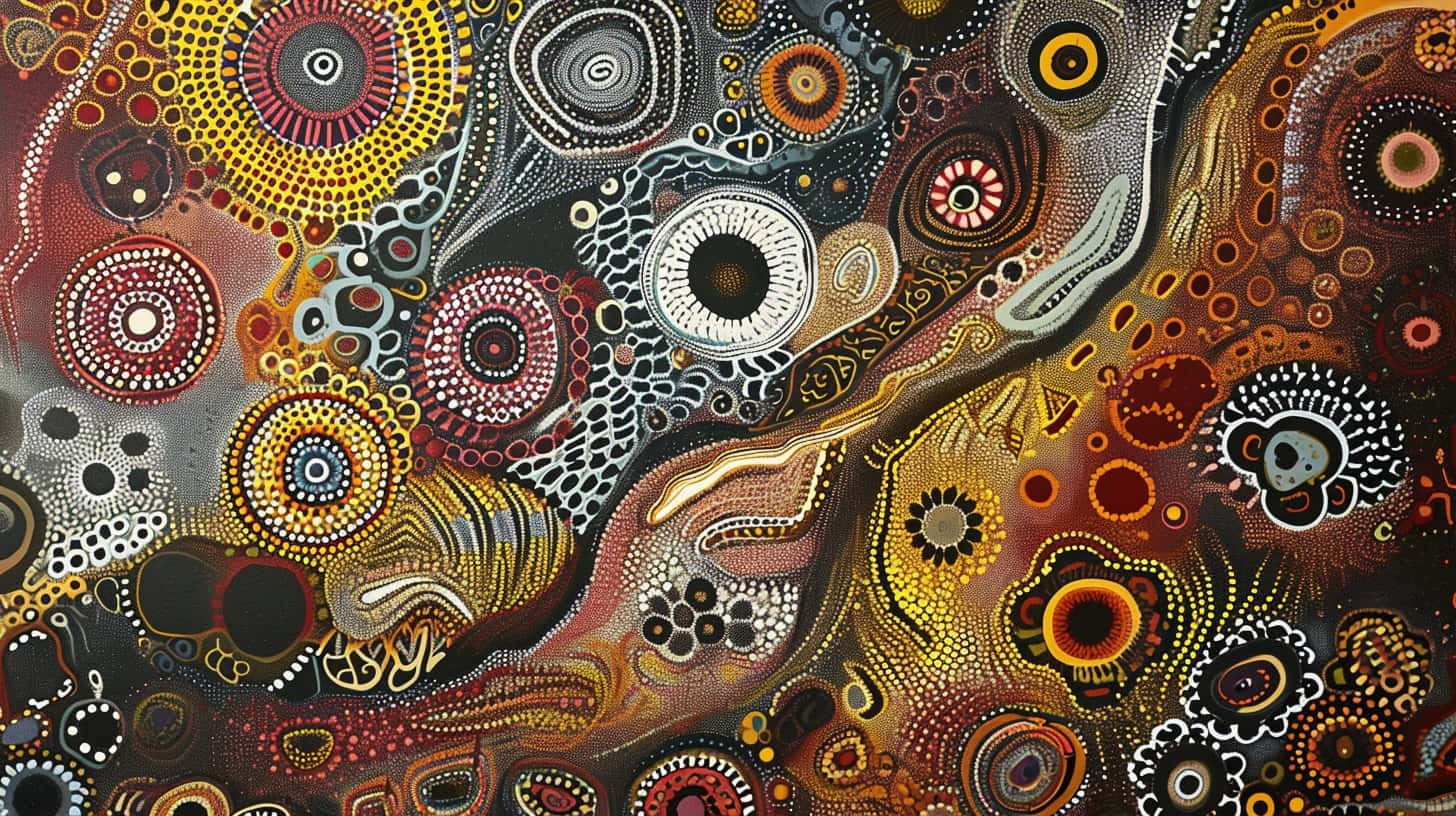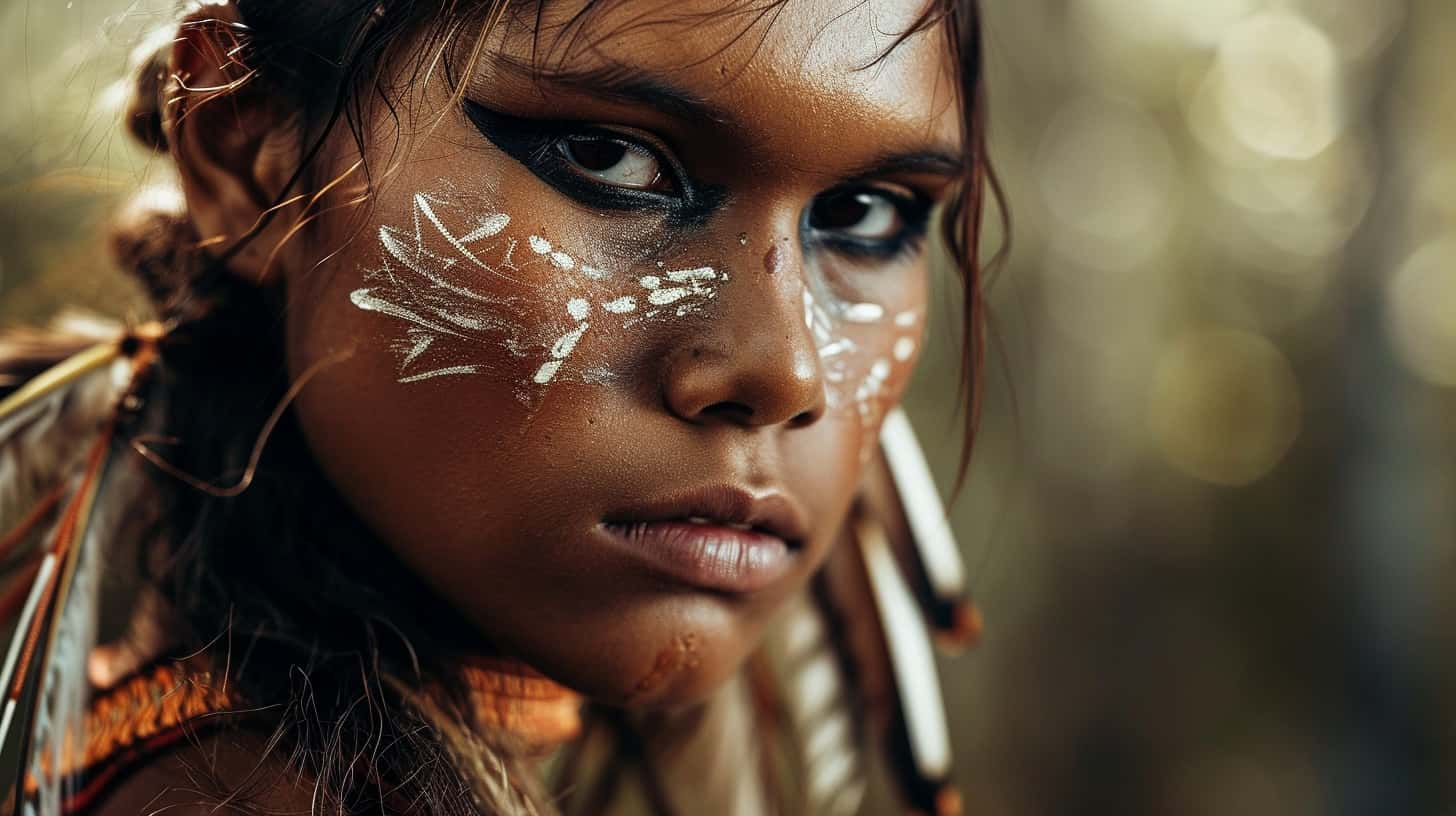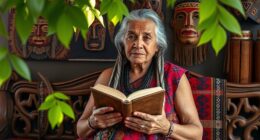Did you know that the histories of Aboriginal and African cultures span thousands of years, each marked by unique traditions, languages, and spiritual beliefs? Understanding their origins sheds light on the shared history of humanity. The strong connection to the earth and a deep respect for ancestors are crucial aspects of both Aboriginal and African societies. Exploring these ancient cultures reveals a treasure trove of tales passed down through generations. These stories, encompassing everything from navigating unknown territories to coexisting harmoniously with various species, showcase a profound understanding of our place in the universe. Join us on a journey of discovery into the heart of Aboriginal and African heritage.
Tracing the Roots of Human Migration from Africa
Early Migrants
As we delve into the origins of aboriginal and African ancestry, it’s fascinating to note that all modern humans can trace their roots back to Africa. Scientific evidence has revealed that our ancestors embarked on a remarkable journey, venturing out from the African continent to populate other parts of the world. This migration is an integral part of our shared heritage, shaping the diverse cultures and societies we see today.
The movement of early humans from Africa unfolded through various routes, with one significant path known as the southern route. This trail led our ancestors across different landscapes and climates, ultimately culminating in their settlement in regions far beyond Africa. The exploration of these migration routes not only offers us insight into our past but also helps us comprehend how human diversity came to be.
Exploring these migration patterns allows us to appreciate how different cultures evolved over time due to geographical separation and environmental influences. For instance, when we understand that certain groups are descendants of migrants who took specific routes out of Africa, it sheds light on why these populations have unique cultural practices and traditions distinct from those originating from other migration paths.
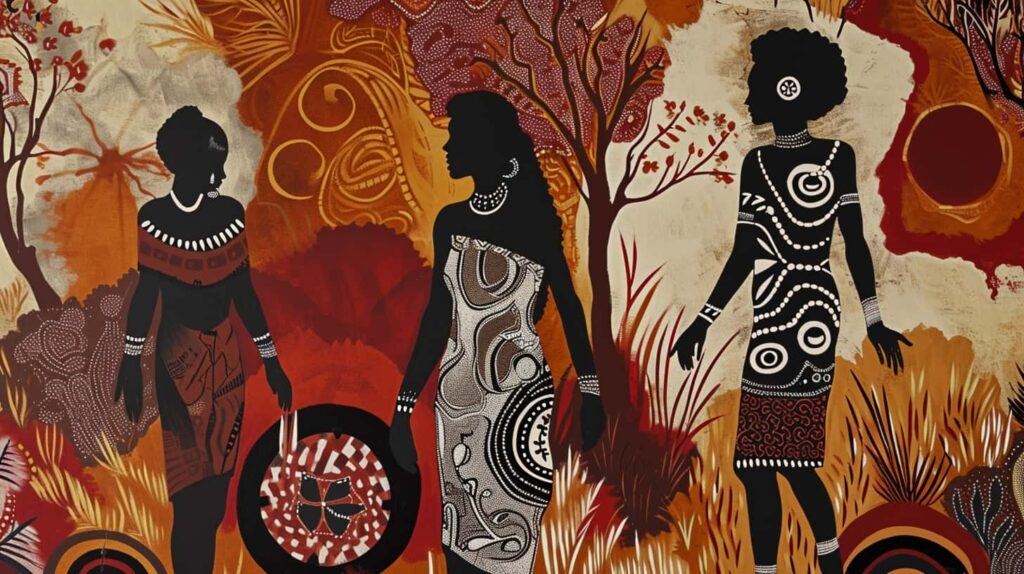
Understanding Diversity
By understanding the migratory journeys taken by early humans, we gain a deeper appreciation for the rich tapestry of human culture around the world today. It’s akin to piecing together a grand puzzle where each fragment represents a unique aspect contributed by various migrant groups as they settled in new territories outside Africa.
Moreover, comprehending these ancient migrations fosters empathy and respect for diverse communities globally. When we recognize that every individual carries within them traces of this epic journey spanning thousands of years ago, it unites us in celebrating both our differences and commonalities as partakers in this extraordinary odyssey across continents.
Genetic Markers Linking Aborigines and Africans
Insights from Studies
Genetic studies have uncovered common markers between Aboriginal Australians and Africans. These genetic links aren’t just random; they provide valuable insights into the historical connections between these two groups. By examining specific genetic markers present in both Aboriginal and African populations, scientists can trace back to a common ancestry, shedding light on the ancient migration patterns of human populations.
These findings contribute significantly to our understanding of human evolution and migration. This isn’t just about genes; it’s about unraveling the intricate tapestry of our shared history as a global community. The discovery of these genetic links challenges conventional narratives about early human migrations, prompting us to rethink how different populations dispersed across the globe over millennia.
Historical Connections
The presence of shared genetic markers between Aboriginal Australians and Africans suggests that there might have been interactions or movements between these geographically distant populations in ancient times. For instance, some researchers propose that modern humans may have migrated out of Africa through multiple waves, with one group traveling along the southern coast of Asia before reaching Australia.
This concept aligns with what we learned earlier about early human migrations originating from Africa. It’s like putting together pieces of a puzzle – each new finding adds depth and detail to our understanding of how our ancestors traversed continents thousands of years ago.
Our Evolving Understanding
As we continue to delve deeper into genetics and anthropology, it becomes increasingly evident that there is so much more for us to learn about our collective past as humans. Each breakthrough in genetic research not only expands our knowledge but also fosters a sense of unity among diverse cultures around the world.
The study’s implications extend beyond scientific curiosity; they carry profound significance for fostering greater empathy and appreciation for cultural diversity globally. We are all partakers in this journey through time – an adventure where every discovery brings us closer together as one human family.
Etymology and Identity in Aboriginal and African Cultures
Language Connections
Studying the etymology of language uncovers captivating links between Aboriginal and African cultures. We’ve learned that both cultures have rich linguistic histories, with words carrying deep meanings that reflect their heritage. For instance, some linguists have identified similarities in certain words used by both Aboriginals and Africans, suggesting a shared linguistic ancestry. This revelation is truly fascinating as it sheds light on the interconnectedness of these two diverse cultures.
Exploring the roots of language has allowed us to appreciate the intricate web of connections between different societies around the world. It’s incredible to think that despite being geographically distant, Aboriginal communities and African tribes may share commonalities in their languages. This understanding enriches our cultural awareness and broadens our perspectives on human history.
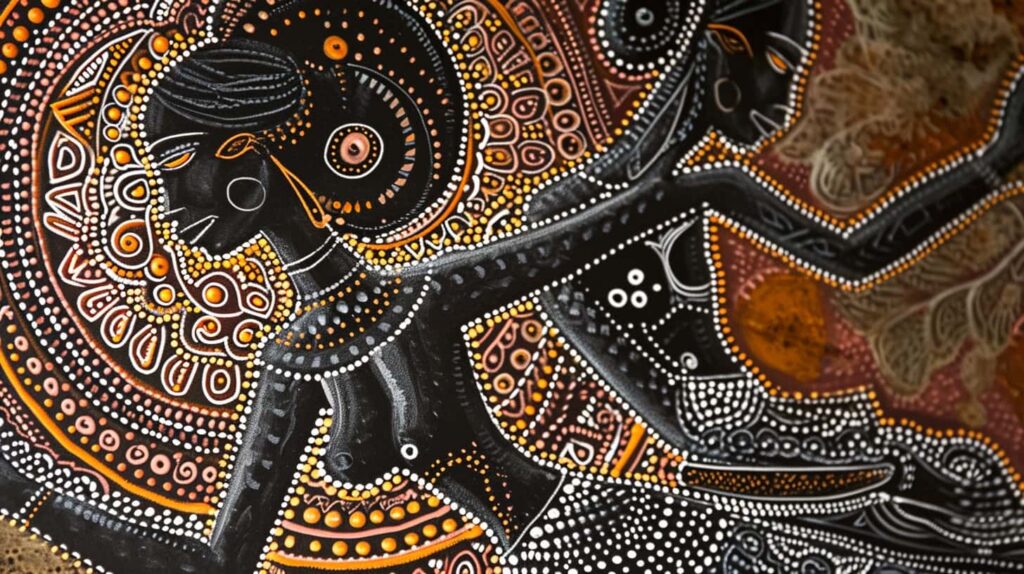
Cultural Identity
Language serves as a vital component in shaping cultural identity for both Aboriginals and Africans. The words they use encapsulate their unique experiences, beliefs, traditions, and values. For example, specific terms related to nature or family hold significant cultural significance for these communities. By delving into the linguistic nuances of each culture, we gain a deeper understanding of how language forms an integral part of their identities.
Our exploration has highlighted how language embodies more than just communication; it encapsulates an entire way of life passed down through generations. Understanding this connection reinforces our respect for diverse cultural expressions worldwide.
Appreciating Diversity
By recognizing the linguistic similarities and differences between Aboriginals and Africans, we’ve developed a greater appreciation for their respective cultural heritages. Our journey has illuminated how distinct languages serve as vessels carrying centuries’ worth of stories, knowledge, wisdom, and customs unique to each community.
This newfound insight encourages us to celebrate diversity rather than view it as a barrier between cultures. Instead of focusing solely on what sets them apart from one another linguistically or culturally speaking – we now embrace what unites them: humanity’s collective narrative told through countless languages across continents.
Population Data Accuracy for Aboriginals and Africans
Importance of Accurate Data
Accurate populations data for Aboriginal and African communities is crucial for understanding their demographics. It helps us comprehend the size, distribution, and characteristics of these communities. With precise population data, we can identify specific needs, plan targeted interventions, and ensure equitable resource allocation. For instance, knowing the accurate population figures can help in determining the number of schools or healthcare facilities required in a particular area to serve these communities effectively.
Obtaining accurate populations data presents challenges due to various factors such as historical undercounting, language barriers, distrust of government authorities, and remote living conditions. These challenges can lead to underrepresentation and hinder policy decisions that directly impact these communities’ well-being. As a result, it’s essential to address these issues by improving data collection methods.
Addressing Challenges
To overcome the obstacles in collecting accurate populations data for Aboriginals and Africans, innovative approaches are necessary. Utilizing community-based participatory research methods allows individuals from within these communities to actively participate in gathering demographic information. This approach fosters trust between researchers and community members while ensuring that cultural nuances are considered during data collection processes.
Moreover, leveraging technology can enhance accuracy in obtaining population figures. Implementing mobile apps or online platforms for survey administration enables easier access to remote areas where many Aboriginal and African populations reside. By using digital tools with multilingual support features tailored to diverse linguistic backgrounds within these communities ensures inclusivity.
Furthermore, establishing partnerships with local community leaders plays a pivotal role in enhancing the accuracy of population data collection efforts among Aboriginals and Africans. Working closely with respected figures within these communities not only builds rapport but also aids in overcoming historical distrust towards official census activities.
Minority Status and Community Challenges
Discrimination and Inequality
Discrimination against aboriginal and African communities is a significant challenge that affects their daily lives. Whether it’s facing prejudice in educational institutions, workplaces, or even public spaces, the impact of discrimination can be deeply distressing. For instance, Aboriginal people in Australia have historically faced systemic discrimination in accessing healthcare services and education opportunities. Similarly, African Americans have experienced racial profiling by law enforcement agencies that has led to higher rates of incarceration compared to other racial groups.

This discrimination often leads to inequality within these communities. It can manifest as disparities in income levels, access to quality healthcare, or representation in positions of power. As a result, many individuals from these minority groups face barriers when trying to improve their socio-economic status. For example, despite efforts to close the gap between Indigenous and non-Indigenous Australians through various government initiatives, there are still significant disparities in employment rates and life expectancies.
In some cases, this inequality also translates into social marginalization where members of these communities feel excluded from mainstream society due to their ethnicity or cultural background. This exclusion can lead to feelings of isolation and alienation among individuals who are already grappling with the challenges associated with being part of a minority group.
Promoting Social Justice
Recognizing these challenges is crucial for promoting social justice, equality, and inclusivity within our societies. By acknowledging the struggles faced by aboriginals and Africans as minority groups worldwide, we can work towards creating a more equitable environment for all individuals regardless of their ethnic or cultural backgrounds.
One way we can contribute is by advocating for policies that address systemic racism and promote diversity within institutions such as schools and workplaces. Supporting initiatives aimed at providing equal opportunities for education and employment helps bridge the gap between different communities.
Furthermore, amplifying the voices of those who belong to these minority groups through storytelling platforms fosters greater understanding among broader society about the experiences they encounter on a daily basis.
Ultimately,we must strive towards building inclusive spaces where everyone feels valued irrespective of their heritage or background.
Skin Color Diversity Among Aboriginal and African Peoples
Celebrating Diversity
The skin color we see among Aboriginal Australians and Africans is incredibly diverse. This wide range challenges the stereotypes and misconceptions that may exist about these communities. Each person’s unique skin tone highlights the beauty and individuality within these groups.
Appreciating the variety of skin colors allows us to celebrate the diversity present in these communities. It’s similar to admiring a beautiful painting with an array of colors, each adding depth and richness to the overall masterpiece. Just like how a rainbow wouldn’t be as stunning with only one color, our world is more vibrant because of the multitude of skin tones found among Aboriginal and African peoples.
Understanding this diversity also helps us recognize that there isn’t just one standard for beauty or attractiveness. Instead, it shows us that beauty comes in various shades, tones, and hues. By appreciating this fact, we can move away from narrow definitions of beauty towards a more inclusive perspective where every shade is valued equally.
Challenging Misconceptions
The variation in skin color among Aboriginal Australians and Africans challenges preconceived notions about what people from these communities should look like. For example, when someone thinks of an Aboriginal Australian or an African person, they might have a specific image in mind based on common stereotypes perpetuated by media or historical inaccuracies.
However, when we encounter individuals from these backgrounds with different skin tones than expected, it forces us to question those assumptions. We realize that there isn’t just one way to look “Aboriginal” or “African.” This realization helps break down stereotypes and encourages us to appreciate each person as an individual rather than fitting them into predetermined categories based on their ethnicity.
This challenge against misconceptions also opens up conversations about heritage and ancestry within these communities. It prompts discussions about migration patterns throughout history which have led to such diverse physical appearances within both groups.
Comparative Analysis of Aboriginal and African Cultures
Art Music Storytelling
When we compare Aboriginal and African cultures, it’s intriguing to discover the similarities and differences in their art, music, storytelling, and traditional practices. Both cultures have unique artistic expressions that reflect their heritage. For instance, Aboriginal dot paintings and African tribal masks are distinct forms of visual art that convey cultural stories and traditions. In music, both cultures use rhythmic beats and vocal harmonies to connect with their ancestral roots. The way they tell stories also differs; while Aboriginal communities often pass down oral histories through dreamtime narratives, African cultures use folklore as a means of preserving their beliefs.
Exploring these aspects not only enriches our knowledge but also strengthens our understanding of the diverse ways in which human societies express themselves creatively. It allows us to appreciate the beauty of cultural diversity by recognizing the common threads that weave through seemingly disparate traditions.
Traditional Practices
Another fascinating aspect is observing the traditional practices within Aboriginal and African communities. While some rituals may differ due to geographical influences or historical contexts, there are underlying patterns that reveal shared values among these two cultures. For example, both Aboriginal Australians and various African tribes have ceremonies or rites of passage marking significant milestones in individuals’ lives.
Studying these traditional practices enables us to gain insight into how different societies mark important events such as birth, initiation into adulthood, marriage, or death. By acknowledging these shared customs across geographically distant groups like Aboriginal peoples in Australia and various ethnic groups across Africa—such as Yoruba people in Nigeria—we develop a deeper appreciation for humanity’s interconnectedness despite our apparent differences.
Indigenous Identities in Modern Africa
Historical Roots
Indigenous communities in Africa, including aboriginal and African groups, have deeply rooted identities that are shaped by their historical experiences. These communities have distinct traditions, languages, and knowledge systems that have been passed down through generations. For example, the San people of Southern Africa have a rich history of rock art and storytelling that reflects their unique cultural identity.
Preserving these indigenous identities is crucial for maintaining the rich tapestry of African cultures. By recognizing and honoring the historical roots of these communities, we can celebrate the diversity that exists within Africa’s borders. This includes acknowledging the contributions of different aboriginal groups to Africa’s heritage and understanding how they continue to shape modern-day societies.
Cultural Heritage
The preservation of indigenous knowledge, languages, and traditions is vital for safeguarding Africa’s cultural heritage. Many traditional practices hold valuable insights into sustainable living, medicinal plants, and ecological conservation. For instance, various African tribes possess extensive knowledge about herbal remedies that are effective in treating common ailments.
By protecting these customs from being lost or forgotten over time, we ensure that future generations can learn from their ancestors’ wisdom. It also allows us to appreciate the diverse ways in which different indigenous groups interact with their environments while promoting respect for traditional lifestyles.
Rights and Self-Determination
Supporting the rights and self-determination of indigenous peoples in Africa is essential for upholding their well-being. This involves recognizing their land rights, promoting inclusive governance structures at local levels where decisions affecting them are made collectively – such as those related to natural resource management or development projects – ensuring access to education without discrimination against language or culture; protecting against forced assimilation; encouraging participation in decision-making processes at all levels (local community boards as well as national government bodies); supporting economic activities based on traditional knowledge like handicrafts production or ecotourism ventures which benefit both individuals within an ethnic group but also contribute positively towards wider societal goals such as environmental conservation efforts aimed specifically towards areas inhabited predominantly by certain ethnicities etcetera.
DNA Evidence of African Ancestry in Aboriginal Australians
DNA Studies
DNA studies have uncovered fascinating evidence of African ancestry among Aboriginal Australians. This revelation is a testament to the rich and diverse history of human migration and cultural exchange. The genetic link between these two seemingly distinct populations provides us with invaluable insights into our shared heritage as a global community.
The analysis of ancient DNA from Aboriginal Australians has revealed significant genetic connections to African populations, particularly those from present-day Botswana and South Africa. These findings challenge previous theories about the origins of Indigenous Australians, highlighting their deep-rooted ties to African communities that date back tens of thousands of years.
This groundbreaking discovery not only reshapes our understanding of human history but also emphasizes the interconnectedness of all people across different continents and cultures. It prompts us to reconsider conventional narratives about migration patterns and challenges us to embrace a more inclusive perspective on the diversity of human experience.
Ancient Migration Patterns
The presence of African genetic markers in Aboriginal Australian populations offers compelling evidence supporting the theory that modern humans first migrated out of Africa approximately 60,000 years ago. This journey led them across Asia, eventually reaching Australia’s shores. The intricate web woven by these ancestral migrations reflects the complex tapestry of human history, demonstrating how our paths have intersected time and again over millennia.
These findings underscore the resilience and adaptability inherent in human communities as they navigated diverse landscapes and climates throughout their migratory journeys. They invite us to contemplate the enduring spirit that has driven humanity forward through countless generations, shaping cultures and societies along the way.
Our shared genetic heritage serves as a powerful reminder that despite geographical distances or perceived differences, we are bound together by common threads woven into the fabric of our existence. It encourages us to celebrate diversity while recognizing our fundamental unity as members of one global family.
Conclusion on Our Shared Histories and Diverse Cultures
Shared Origins
When we explore the history of Aboriginal and African cultures, we uncover fascinating connections that enrich our understanding of human history. The evidence of African ancestry in Aboriginal Australians reveals a shared origin that goes back thousands of years. This not only showcases the interconnectedness of different groups but also emphasizes the unity of the human story. By recognizing these shared origins, we can promote unity, empathy, and respect for diverse cultures.
Understanding the intertwined histories of Aboriginal and African cultures can help us appreciate the diversity that exists within the human experience. For instance, learning about the migration waves that brought people to different parts of the world allows us to recognize the complex paths our ancestors took. This knowledge fosters a sense of connection and solidarity among all peoples, regardless of their languages, customs, or geographical locations.
Promoting Inclusivity
Recognizing our shared origins is a crucial step toward building a more inclusive global society. By acknowledging the contributions of Aboriginal and African cultures to our collective world heritage, we celebrate the richness of human diversity. This inclusive mindset encourages us to embrace cultural differences rather than viewing them as barriers. It allows us to appreciate the unique traditions, art forms, and belief systems that have evolved within these communities over time.
When we actively engage with the diverse cultures of Aboriginal and African peoples, we create opportunities for mutual learning and growth. For example, attending cultural events, reading literature by Aboriginal or African authors, or participating in traditional ceremonies can deepen our understanding of these rich heritages. This engagement not only broadens our perspectives but also fosters a spirit of openness and acceptance within our communities.
Fostering Global Understanding
Embracing the diversity of Aboriginal and African cultures contributes to a more inclusive global society. It enables us to challenge stereotypes and misconceptions by highlighting the richness and complexity of these traditions. As a result, we become better equipped to address issues related to cultural recognition and representation in various spheres such as education, media, and policymaking.
By supporting initiatives that promote cross-cultural exchange and collaboration between Aboriginal and African communities, we actively contribute to creating a more interconnected world. This might involve participating in university research projects focused on indigenous knowledge systems or attending workshops led by scholars who specialize in African history. Our willingness to engage with these diverse perspectives demonstrates our commitment to fostering global understanding and empathy.
In conclusion, exploring the connections between Aboriginal and African cultures not only enriches our understanding of human history but also promotes unity, empathy, and respect for diverse cultures. Embracing this diversity contributes to a more inclusive global society where all voices are valued and celebrated.
Frequently Asked Questions
What evidence supports the connection between Aboriginal and African origins?
Genetic markers and DNA evidence have provided substantial support for the link between Aboriginal and African origins, tracing human migration patterns from Africa to Australia. This evidence underscores the shared history and ancestry of these two diverse cultures.
How does skin color diversity manifest among Aboriginal and African peoples?
Skin color diversity is a testament to the rich tapestry of humanity’s genetic heritage. Both Aboriginal and African peoples exhibit a wide range of skin tones, showcasing the beautiful spectrum of melanin expression within these distinct cultural groups.
Are there challenges faced by both Aboriginals and Africans as minority communities?
Yes, both Aboriginals and Africans encounter unique challenges as minority communities, including issues related to identity, representation, social equity, and preserving their cultural heritage in modern societies.
What role does etymology play in shaping the identities of Aboriginal and African cultures?
Etymology serves as a powerful tool for understanding how language shapes cultural identities. It unveils historical connections between words, revealing shared linguistic roots that reflect deep-seated connections between Aboriginal and African cultures.
How accurate is population data when it comes to representing Aboriginals and Africans?
Population data accuracy plays a crucial role in capturing an authentic portrayal of these diverse communities. However, it’s essential to approach such data with sensitivity while recognizing potential limitations in accurately reflecting their true population dynamics.
Talise is a talented writer and an expert in her field. Her unique perspective and insights enrich our content with depth and authenticity. With a wealth of knowledge and a strong connection to the subjects she writes about, Talise crafts engaging and informative articles that resonate with our readers. Her dedication to bringing Indigenous culture and wisdom to light is truly commendable.

